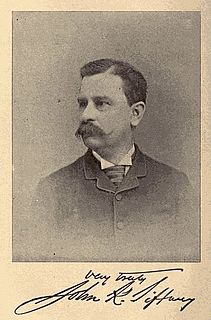| Walter R. McCoy | |
|---|---|
| Born | January 12, 1880 |
| Died | June 20, 1952 (aged 72) |
| Nationality | USA |
| Occupation | Engineer |
| Spouse(s) | Ethel Bergstresser McCoy |
| Engineering career | |
| Institutions | Collectors Club of New York Philatelic Plate Number Association American Philatelic Congress |
| Projects | Created the largest collection of Bureau issue plate number pieces |
| Awards | APS Hall of Fame USSS Hall of Fame |
Walter R. McCoy (January 12, 1880 – June 20, 1952), of New York City, was an advocate of the hobby of stamp collecting and created award-winning collections of his own. He was the husband of Ethel Bergstresser McCoy who was famous for her United States airmail collection.

The City of New York, usually called either New York City (NYC) or simply New York (NY), is the most populous city in the United States. With an estimated 2017 population of 8,622,698 distributed over a land area of about 302.6 square miles (784 km2), New York is also the most densely populated major city in the United States. Located at the southern tip of the state of New York, the city is the center of the New York metropolitan area, the largest metropolitan area in the world by urban landmass and one of the world's most populous megacities, with an estimated 20,320,876 people in its 2017 Metropolitan Statistical Area and 23,876,155 residents in its Combined Statistical Area. A global power city, New York City has been described as the cultural, financial, and media capital of the world, and exerts a significant impact upon commerce, entertainment, research, technology, education, politics, tourism, art, fashion, and sports. The city's fast pace has inspired the term New York minute. Home to the headquarters of the United Nations, New York is an important center for international diplomacy.

Stamp collecting is the collecting of postage stamps and related objects. It is related to philately, which is the study of stamps. It has been one of the world's most popular hobbies since the late nineteenth century with the rapid growth of the postal service, as a never-ending stream of new stamps was produced by countries that sought to advertise their distinctiveness through their stamps.
Ethel Bergstresser (Stewart) McCoy, of New York City, was a philatelist who created a number of stamp collections, and was active within the philatelic community. She was the daughter of Charles Bergstresser (1858-1923), one of the founders of Dow Jones & Co.


